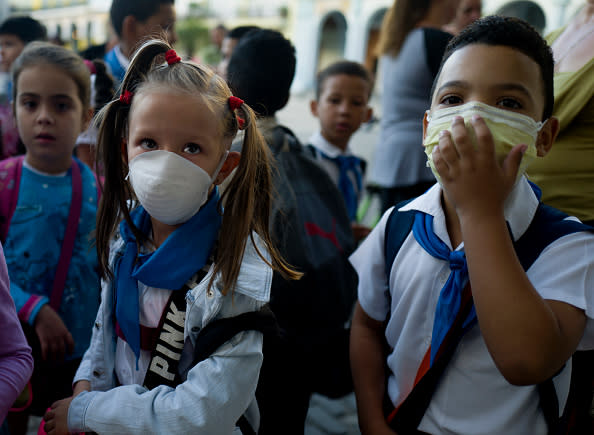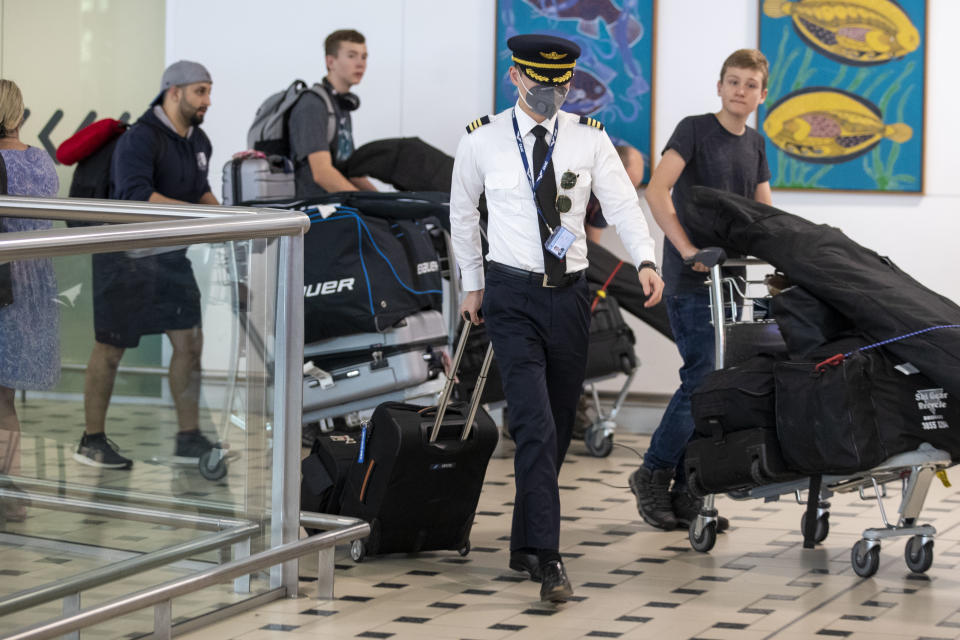Why doctors are so worried about 'stealth spreaders'
The availability of coronavirus testing in the U.S. has increased significantly in the last week— so too, as predicted, have the number of confirmed cases.
According to the latest data from Johns Hopkins University, the U.S. reported just over 3,500 COVID-19 cases at the start of the week; by Wednesday the number had more than doubled to 7,300.
A seventh person has died from coronavirus in Australia as the total number of cases surpassed 750 on Friday.
The number of COVID-19 deaths worldwide surpassed 10,000 on Friday.
Through city-wide lockdowns and state-level school closures, officials are working to contain the virus in any way they can.
But for the doctors on the frontlines, concerns about “stealth spreaders” — individuals who have the virus without symptoms — are growing.

A study published in Science by researchers from the Columbia University Mailman School of Public Health this week suggests that undetected cases of the virus were what fuelled the outbreak in China.
Scientists reached the conclusion through a computer modelling program that allowed them to analyse data from China’s epidemic.
Through it, they found that as many as 86 percent of cases in Wuhan — where the virus originated — went “undetected” prior to a January 23 travel shut down.
“The explosion of COVID-19 cases in China was largely driven by individuals with mild, limited, or no symptoms who went undetected,” the study’s co-author Jeffrey Shaman, PhD, professor of environmental health sciences at Columbia University Mailman School said in a statement.
“Depending on their contagiousness and numbers, undetected cases can expose a far greater portion of the population to [a] virus than would otherwise occur.”
Shaman says that stealth transmissions — as this phenomenon is called — may continue to pose a “major challenge” to the containment of the coronavirus worldwide.
To be clear, much more research is needed to determine what percentage of COVID-19 patients in the U.S. are not exhibiting symptoms, and how that may impact the way in which the virus spreads.
But as experts work to figure that out, what do you need to know about stealth cases? William Petri, PhD, chief of the University of Virginia School of Medicine’s division of infectious diseases and international health, shares some important facts.

Stealth transmission is not unique to the coronavirus
While the idea of asymptomatic patients may seem novel, it’s actually a common factor in many outbreaks. Petri says one of the best examples is polio. “The difficulty with the global eradication of polio was that for every one case of paralysis, there's a hundred children who are subclinically or without any symptoms infected with polio,” he tells Yahoo Lifestyle. “So it makes it very difficult to control polio spread because the vast majority of children, you don't even know that they're infected unless you test them.” Petri said in order to eradicate the disease, researchers had to create a vaccine that also stopped “subclinical” — another word for asymptomatic — infections, something that scientists will likely need to do with this virus as well.
Having no symptoms doesn’t mean your body isn’t fighting the virus
Petri says that there isn’t one mechanism behind catching a virus without symptoms — meaning, it could either be the body ignoring the virus altogether or fighting it off quietly without causing negative reactions in the body. In this outbreak, he suspects it’s the latter. “I think more often than not, when you have a subclinical infection without any symptoms that your immune system is doing a really good job, you know — because you're not getting yelled at,” says Petri. “And so maybe this 86 percent of people who have subclinical COVID-19, maybe we can learn from them. What is an effective immune response?”

Older people may be more likely to have a severe reaction
Petri says there are no clear predictors for asymptomatic patients — meaning it’s largely impossible to know how individuals’ will respond to the infection beforehand. Some infections tend to disproportionately affect those with underlying conditions, while others strike those who are older — which COVID-19 seems to be doing. Petri says this may be due to fatigue. “One of the possible explanations is just that the immune system just gets exhausted with age,” he says. “So it's something about your immune system when you're elderly is less able to control that.”
Stealth spreaders have what’s known as “innate immunity”
What is clear is that those who go without symptoms have somehow developed “innate immunity” — meaning, without prior exposure, the body has somehow become immune. “You don't have time yet to make antibodies against COVID-19 ... so it requires other arms of the immune system that can make more of a stereotypic response against any virus,” says Petri. This innate response is something that researchers can use to study what’s working. “A lot can be understood as far as having to combat this by understanding what’s causing the majority of individuals to handle this infection in a really good way,” he says.

Measuring the number of stealth transmissions requires more tests
Testing has been a major issue in the U.S. from the beginning of the outbreak, with the CDC reporting just 77 tests performed last week, one of the first weeks the test was widely available. While testing has now increased nationwide, in order to find cases in which people are not exhibiting symptoms, Petri says you’d need even more. “[The researchers] make the point about how important it is to have a robust testing ability so you can identify the subclinical infections,” says Petri. “You’ve got to be able to identify what is driving the transmission.”
Identifying these stealth spreaders is key to stopping the virus’ spread
While things like social distancing can be helpful in containing the virus, Petri says that the real key will be getting enough tests to pinpoint these individuals who are symptom-less, and then perform what’s known as “contact tracing” — or tracking all the individuals that an infected person came in contact with. In the meantime, he says it’s a good reminder that the recommendations from the CDC and government officials to isolate are crucial.
“It really does make the point that the social distancing, the closing of schools, closing of universities, having no meeting with more than 10 people, it is really is important,” he says. “Because even the best-intentioned person can be the equivalent of Typhoid Mary.”
Yahoo US
Do you have a story tip? Email: newsroomau@yahoonews.com.
You can also follow us on Facebook, Instagram and Twitter and download the Yahoo News app from the App Store or Google Play.




